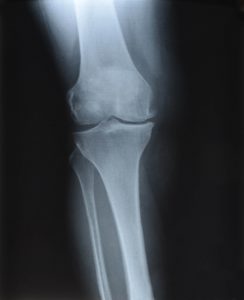Subluxation
 Joint subluxation occurs when the joint partially dislocates. Do not confuse with luxation which occurs when the joint completely dislocates. Often, joint subluxation occurs due to a traumatic injury or due to an injury that occurs from repetitive motion. Subluxation may also occur to individual vertebrae within the spine. Subluxation most commonly affects the joints of the shoulder, knee, elbow, and spine.
Joint subluxation occurs when the joint partially dislocates. Do not confuse with luxation which occurs when the joint completely dislocates. Often, joint subluxation occurs due to a traumatic injury or due to an injury that occurs from repetitive motion. Subluxation may also occur to individual vertebrae within the spine. Subluxation most commonly affects the joints of the shoulder, knee, elbow, and spine.
What are the symptoms of joint subluxation
The main symptoms of subluxation often remain constant through all of the possible affected joints. Some joints may have more joint specific symptoms that occur. The main overall symptoms of joint subluxation include:
- Bruising
- Numbness
- Loss of feeling
- Loss of or decreased range of motion of the affected joint
- The affected joint feeling loose or unstable
- Localized pain around the affected joint
- Visible swelling around the affected joint
Causes of joint subluxation
Joint subluxations often occur due to acute injury. Acute injuries, or traumatic injuries, occur due to overuse injuries, hyperextending the joint, or blunt forces including falls, motor vehicle accidents, or collisions in sports. Joint subluxations may also result due to predisposed genetic factors. Predisposed genetic factors include overall joint laxity or dysplasia. Poor muscle tone or weak surrounding tissues can also make an individual more likely to subluxate a joint. Joints need muscles to protect them and if the ligaments, tendons, and muscles surrounding the joint cannot support the joint, the joint has a higher chance of subluxating or even fully dislocating.
Diagnosing a joint subluxation
To diagnose a joint subluxation the orthopedic specialist starts with a physical examination. During a physician exam, the doctor goes over patient history with the patient. The doctor also goes over the daily recreational activities that the patient performs in addition to work activities. Next, the orthopedic specialist examines the affected joint. The doctor may move the joint and palpate the joint in different areas to see which areas reproduce pain. Next, the physician orders diagnostic testing. Often, a simple X-Ray can diagnose a subluxation. The treating physician may also order an MRI to ensure no further damage occurred to the surrounding and supporting tissues.
Treating a joint subluxation
To treat a joint subluxation, the doctor first must realign the joint (if out of place).Next, the treating physician prescribes non-steroidal anti-inflammatory medications. The doctor also recommends RICE- Rest, Ice, Compression, Elevation. Joint subluxations do not regularly require surgical intervention but the patient may require surgical intervention if the joint subluxation reoccurs regularly. The patient may also require surgical intervention if the physician cannot realign the joint without surgery.
To realign the joint with surgery, an anesthesiologist places the patient under general anesthesia. With a patient under general anesthesia, the patient remains asleep for the entirety of the procedure. While asleep, the patient does not feel anything and does not wake up until after the procedure. Once the anesthesiologist places the patient under, the orthopedic joint specialist realigns the joint. The surgeon may have to perform an open surgery or perform the surgery arthroscopically. Physicians consider arthroscopic surgery a minimially invasive surgery. Surgeons perform arthroscopic surgery through small incisions or portals rather than large incisions. The portals interchangeably house tools that the surgeon uses to perform the surgery while constantly using one portal for the camera in order to see inside of the joint.
house tools that the surgeon uses to perform the surgery while constantly using one portal for the camera in order to see inside of the joint.
To strengthen the muscles and tissues surrounding the joint, the treating physician may prescribe the patient a physical therapy protocol.
To view a list of all insurances that AOA Orthopedic Specialists accept, click HERE. To schedule an appointment online, click HERE.

